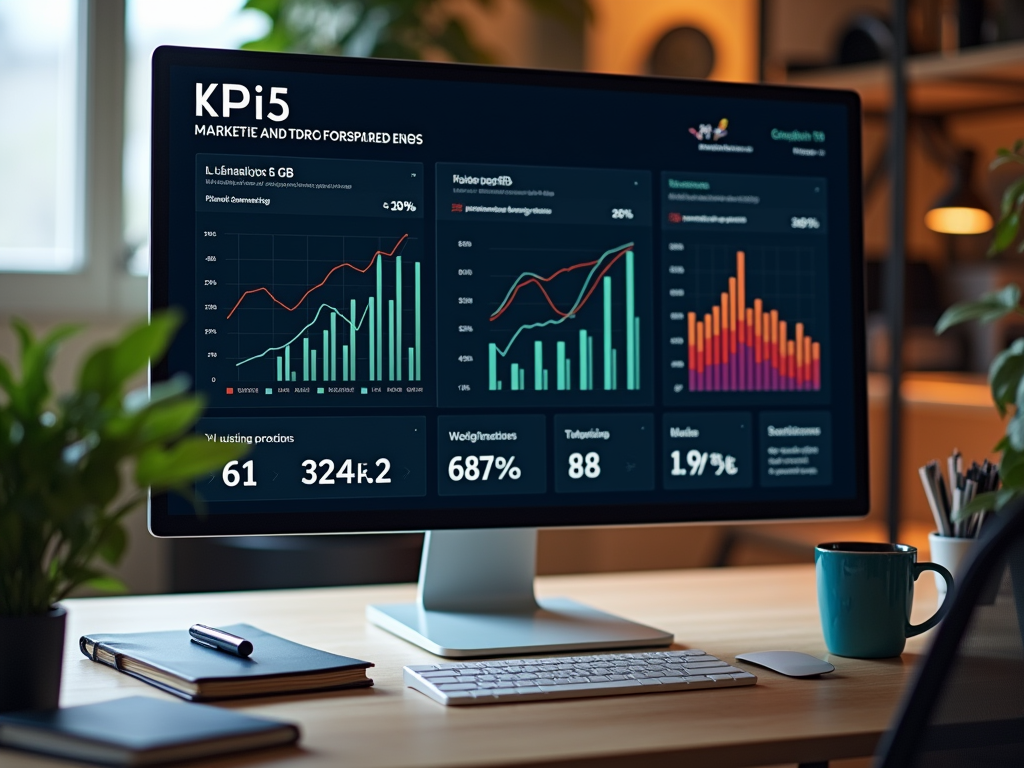Measuring marketing effectiveness is vital for businesses aiming to maximize their return on investment (ROI) and understand customer behavior. Analytics provides marketers with tools to assess the performance of various marketing activities, allowing for data-driven decisions. By systematically analyzing key performance indicators (KPIs), businesses can determine which strategies are working, identify areas for improvement, and optimize their marketing efforts overall. This article will explore different aspects of marketing effectiveness measurement through analytics, including essential KPIs, methods for data collection, and how to implement changes based on insights gained.
Understanding Key Performance Indicators (KPIs)

Key performance indicators (KPIs) are measurable values that demonstrate how effectively a business is achieving its operational and strategic goals. To gauge marketing effectiveness, it’s crucial to define relevant KPIs aligned with business objectives. Here are some important KPIs to consider:
- Conversion Rate: The percentage of visitors who take a desired action, such as making a purchase or signing up for a newsletter.
- Customer Acquisition Cost (CAC): The total cost of acquiring a new customer, including all marketing expenses.
- Return on Investment (ROI): A measure comparing the profit generated from marketing efforts against the total costs incurred.
- Customer Lifetime Value (CLV): The total revenue a business can expect from a single customer account throughout their relationship.
- Website Traffic: The total number of visitors to a website; higher traffic generally indicates effective marketing strategies.
Each of these KPIs provides insight into different aspects of marketing performance, enabling businesses to make informed decisions based on data.
Implementing Data Collection Strategies

Once you’ve defined your KPIs, the next step is to implement effective data collection strategies. Gathering accurate data is indispensable for analyzing marketing effectiveness. Here are some strategies to effectively collect relevant data:
- Utilize Google Analytics: This free tool helps track website traffic, user behavior, conversion goals, and provides segmentation options.
- Conduct Surveys: Collect customer feedback directly to understand their motivations, preferences, and satisfaction levels.
- Monitor Social Media Engagement: Analyze likes, shares, comments, and follower growth to evaluate the effectiveness of your social media campaigns.
- Set Up Email Analytics: Use tools provided by email marketing platforms to measure open rates, click-through rates, and conversion rates for your email campaigns.
- Use Heatmaps: Tools like Hotjar can provide visual data on how users interact with your website, helping to improve user experience.
Employing a combination of these strategies can provide a comprehensive understanding of how your marketing campaigns are performing.
Analyzing Data and Gaining Insights
Once data is collected, the next step is to analyze it to derive actionable insights. This phase involves scrutinizing the quantitative and qualitative data to understand the effectiveness of your marketing strategies. Here are some analytical approaches to consider:
- Trend Analysis: Examine data over time to spot patterns or trends that indicate improvements or declines in performance.
- Segmentation: Break down data into specific demographics to understand how different groups respond to various marketing tactics.
- A/B Testing: Test different versions of a marketing piece, such as emails or ads, to determine which performs better.
- Funnel Analysis: Review the customer journey to identify where drop-offs occur and optimize those touchpoints.
- Predictive Analytics: Use historical data to forecast future trends and customer behavior, informing marketing decisions.
By applying these analytical methods, businesses can identify successful marketing strategies and areas that may require adjustment for greater effectiveness.
The final step in measuring marketing effectiveness is to act on the insights gathered from your data analysis. Making informed changes to marketing strategies can ensure ongoing improvements and enhanced performance. Here are key steps to optimize your marketing efforts:
- Adjust Targeting: Refine your audience segmentation based on analysis to ensure marketing messages reach the right people.
- Reallocate Budget: Shift marketing funds towards channels or campaigns that demonstrate higher effectiveness.
- Enhance Content: Create more engaging and relevant content that resonates with your audience’s needs and preferences.
- Test More: Continue A/B testing and experimentation with new tactics to stay ahead in the market.
- Continuously Monitor: Establish a routine for regular analysis to adapt to changing market dynamics swiftly.
By implementing these strategies, businesses can effectively improve their marketing efforts and achieve desired results.
Conclusion
In conclusion, measuring marketing effectiveness with analytics is essential for businesses seeking to enhance their performance and achieve strategic objectives. By understanding key performance indicators, collecting relevant data, analyzing insights, and implementing necessary changes, businesses can refine their marketing strategies based on reliable, data-driven decisions. Continual evaluation helps organizations not only track their success but also adapt to the ever-evolving market landscape.
Frequently Asked Questions
1. What are some common KPIs for measuring marketing effectiveness?
Common KPIs include conversion rate, customer acquisition cost, return on investment, customer lifetime value, and total website traffic. These metrics give insights into different aspects of your marketing performance.
2. How frequently should I analyze my marketing data?
It’s recommended to analyze your marketing data regularly, ideally on a monthly or quarterly basis, to identify trends and make timely adjustments to your strategies.
3. Are surveys effective for collecting marketing data?
Yes, surveys are an effective means of gathering qualitative data directly from customers, providing insights into their preferences and satisfaction levels.
4. How can I improve my website’s conversion rate?
Improving your website’s conversion rate can involve optimizing page loading speed, enhancing user experience, streamlining navigation, and ensuring a clear call to action in your content.
5. What is the role of predictive analytics in marketing?
Predictive analytics uses historical data to forecast future trends and behaviors, allowing businesses to anticipate customer needs and adjust their marketing strategies proactively.
